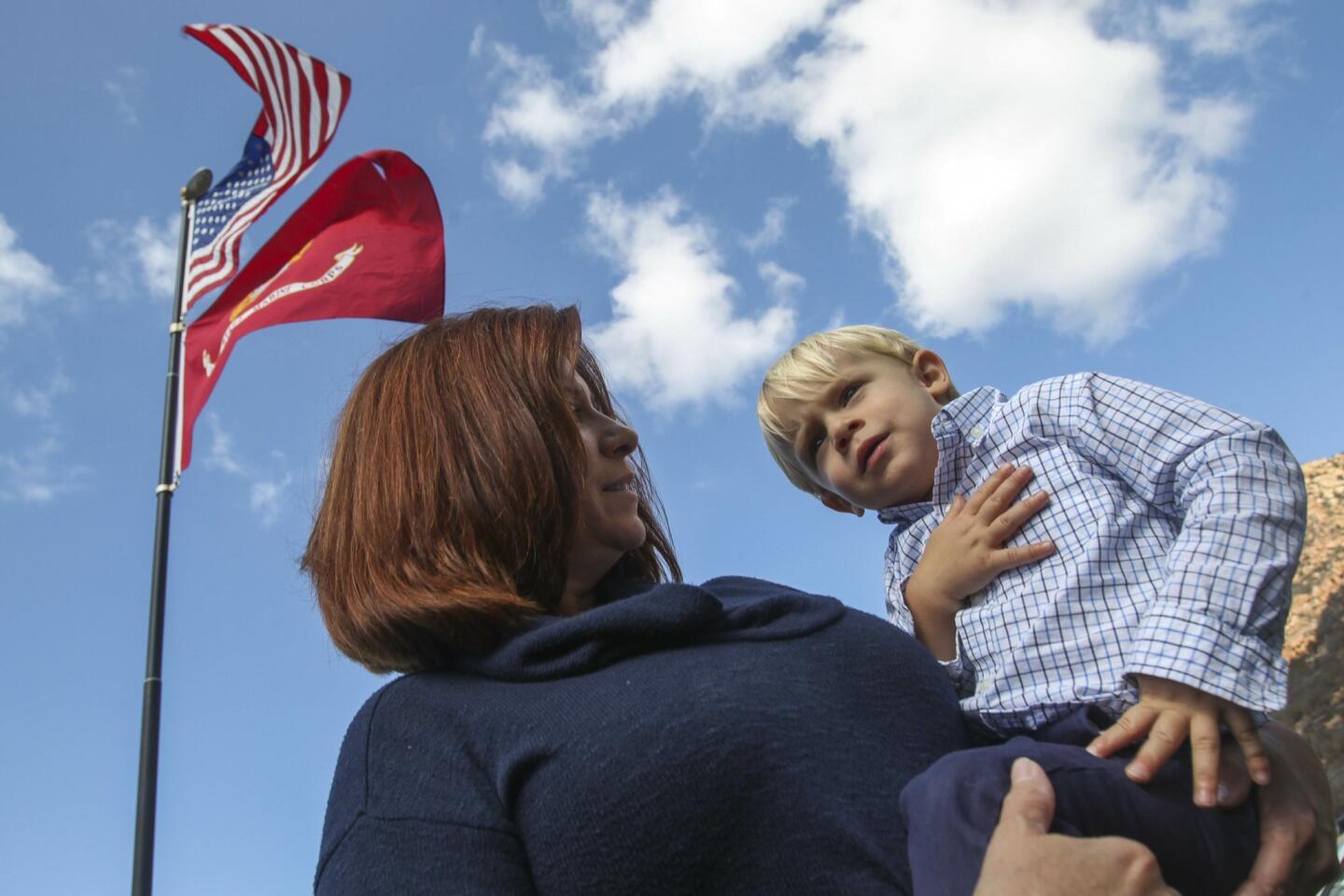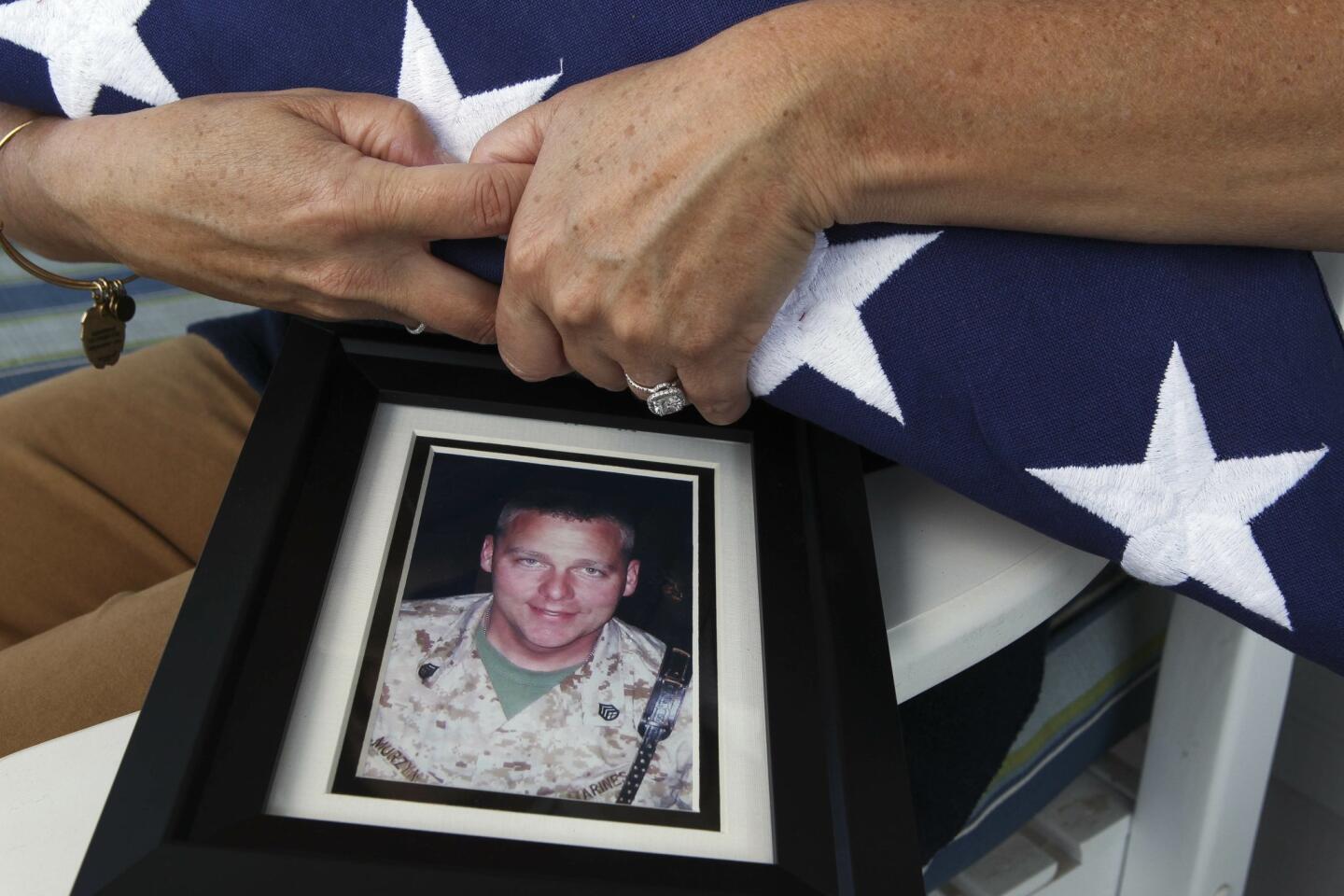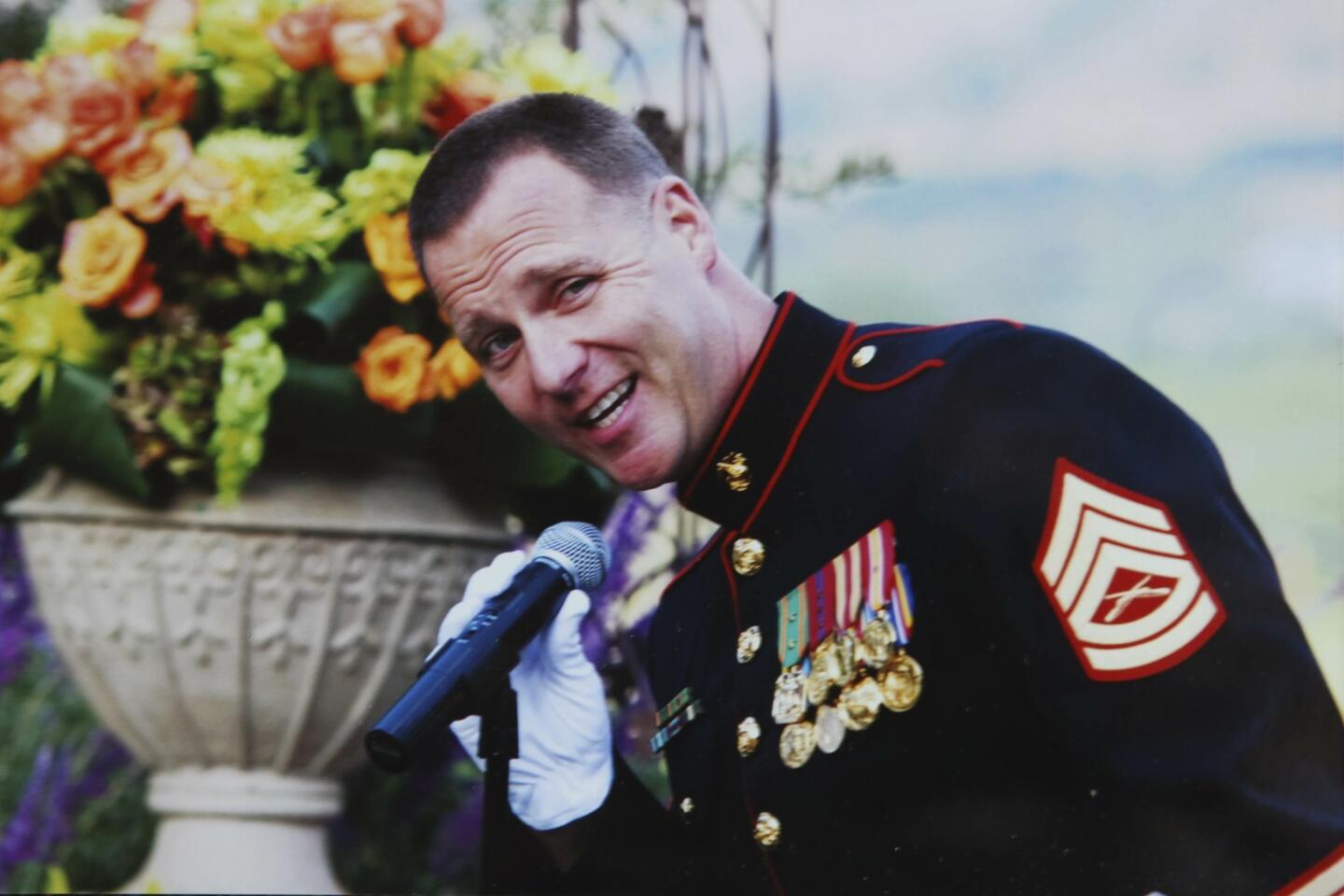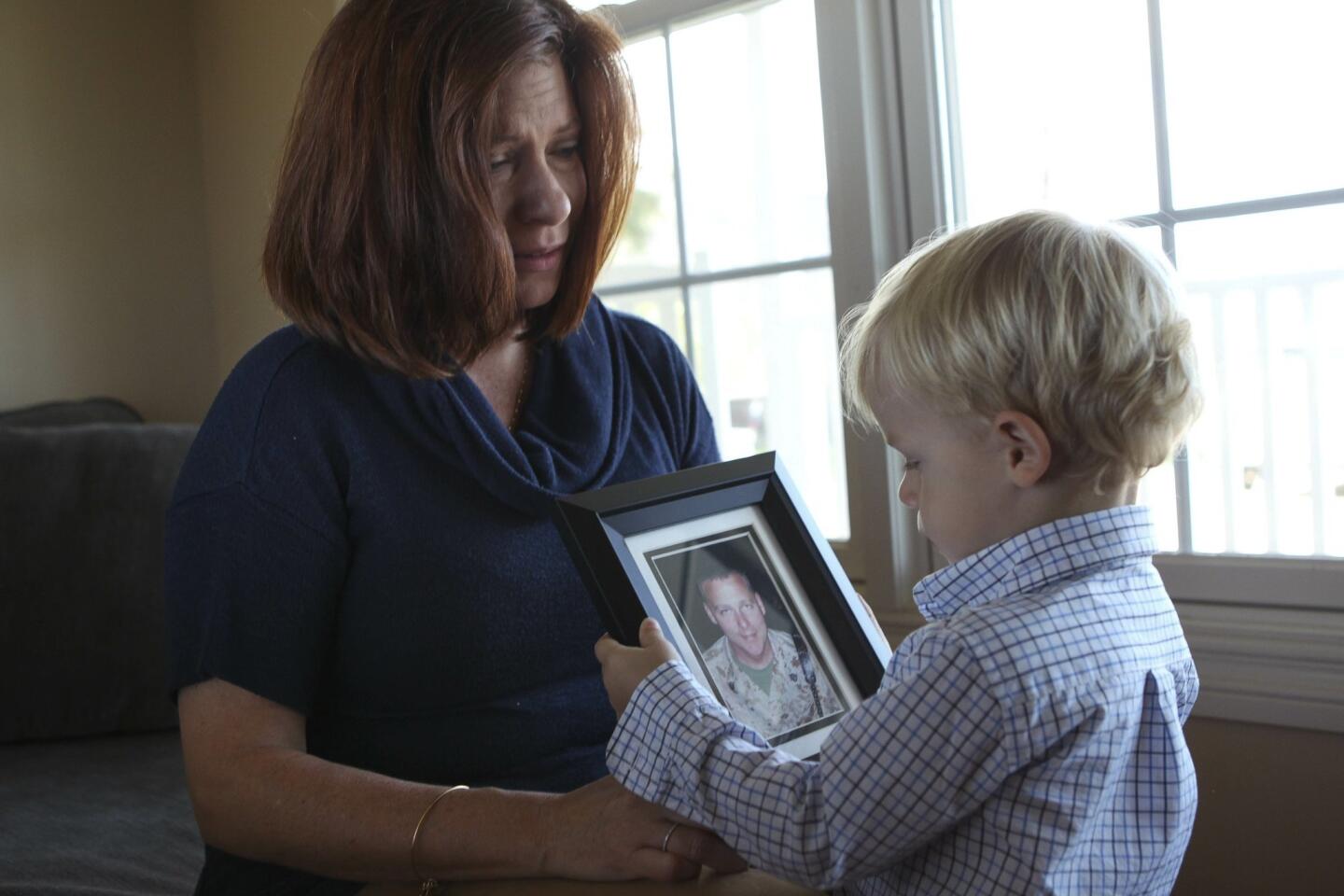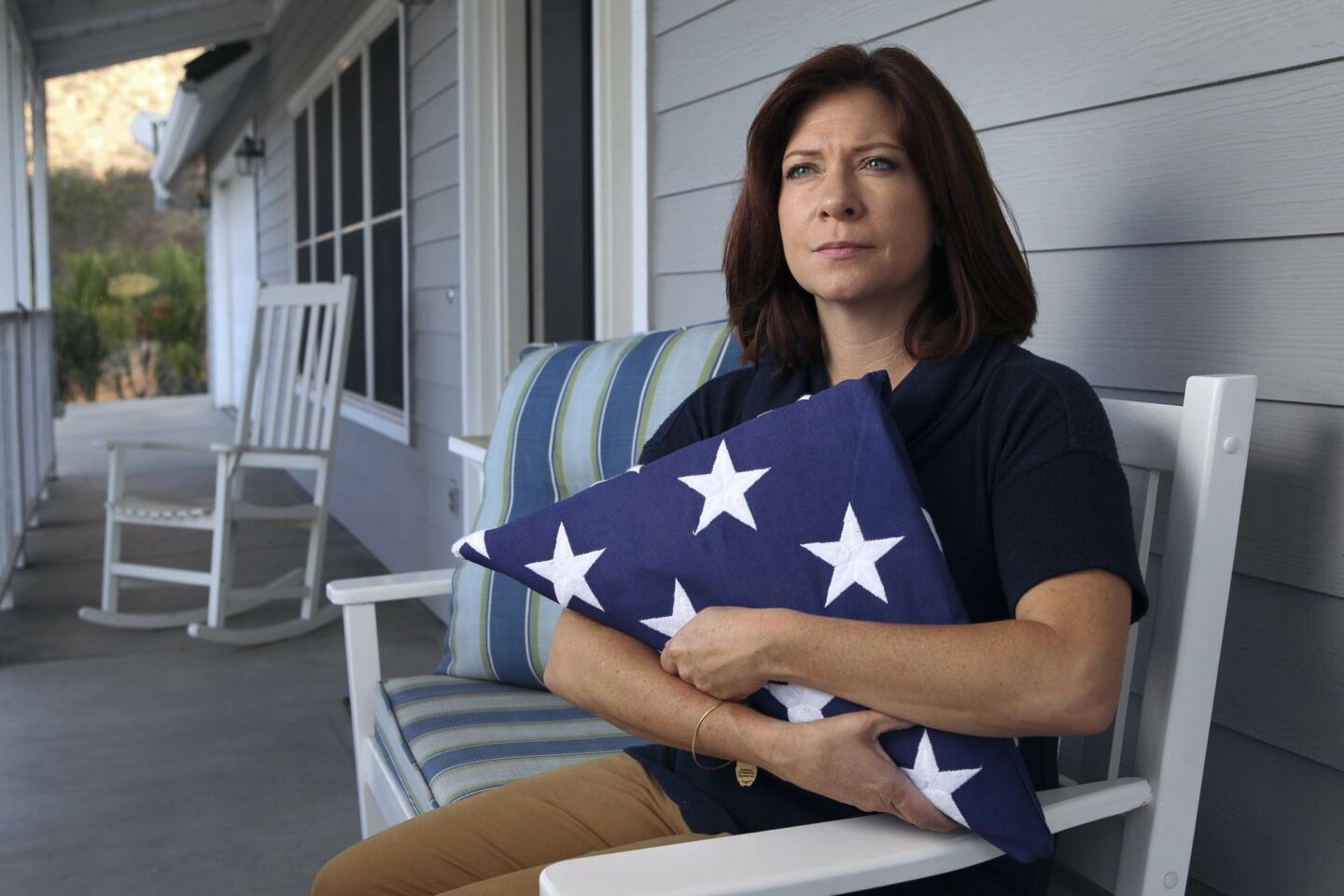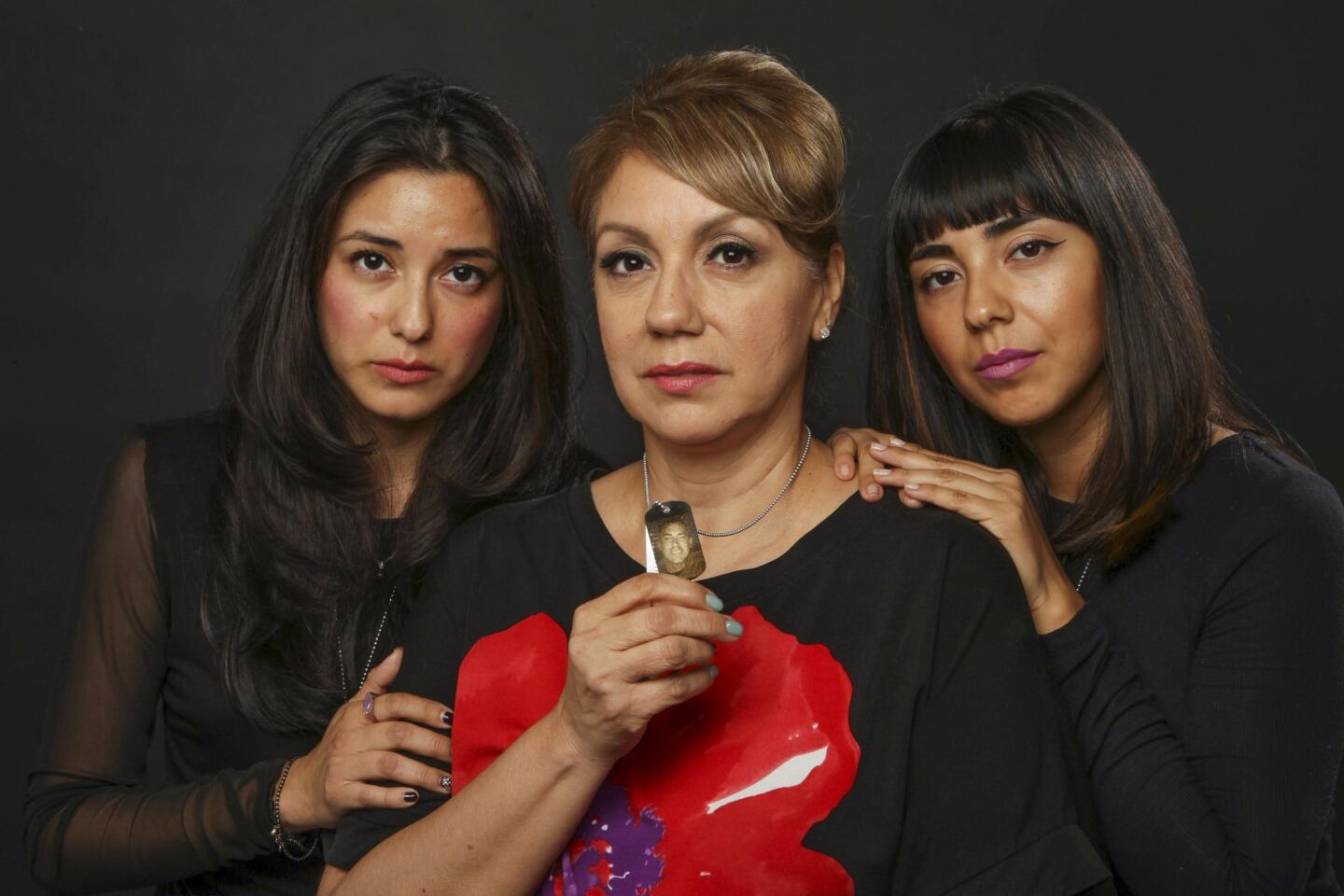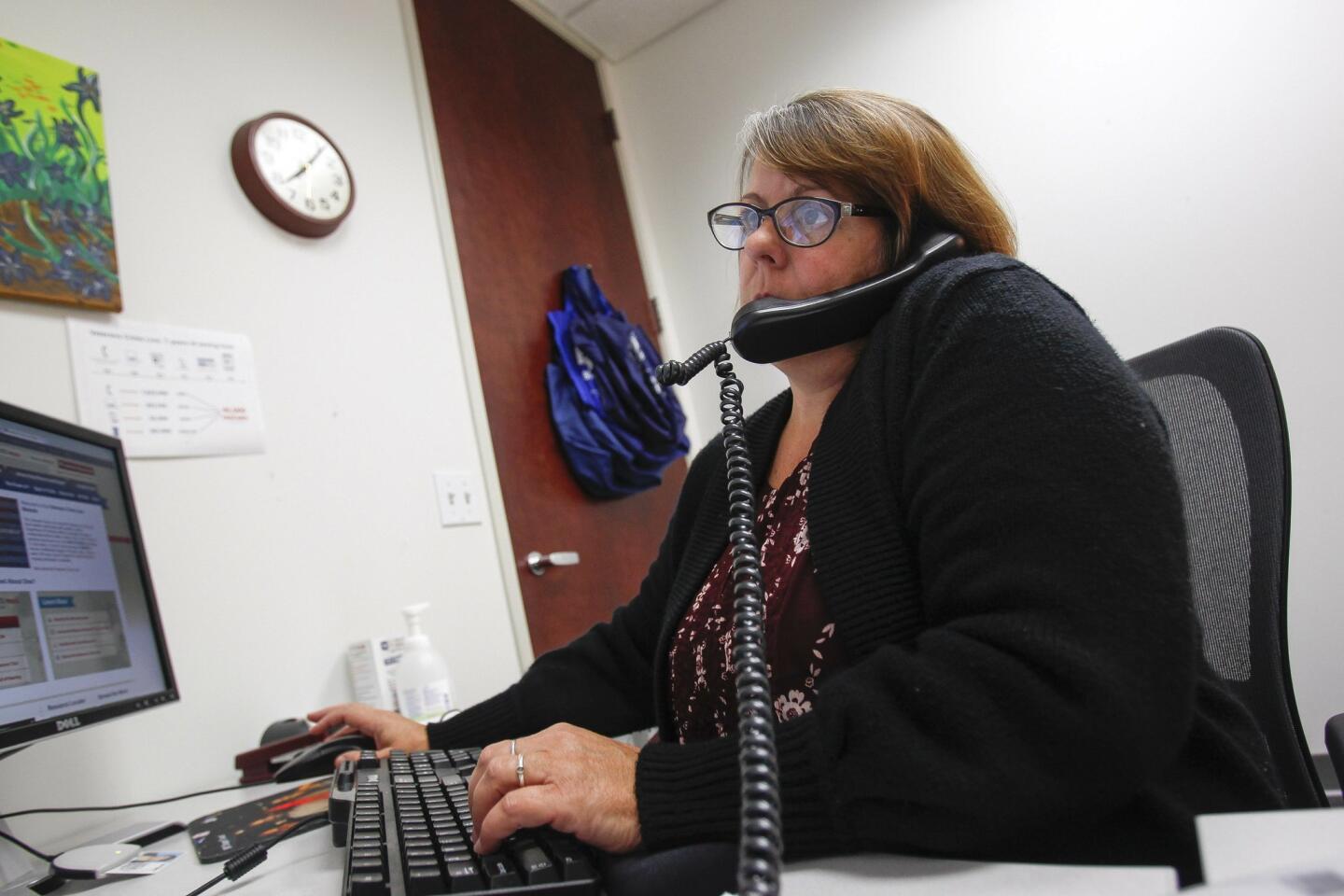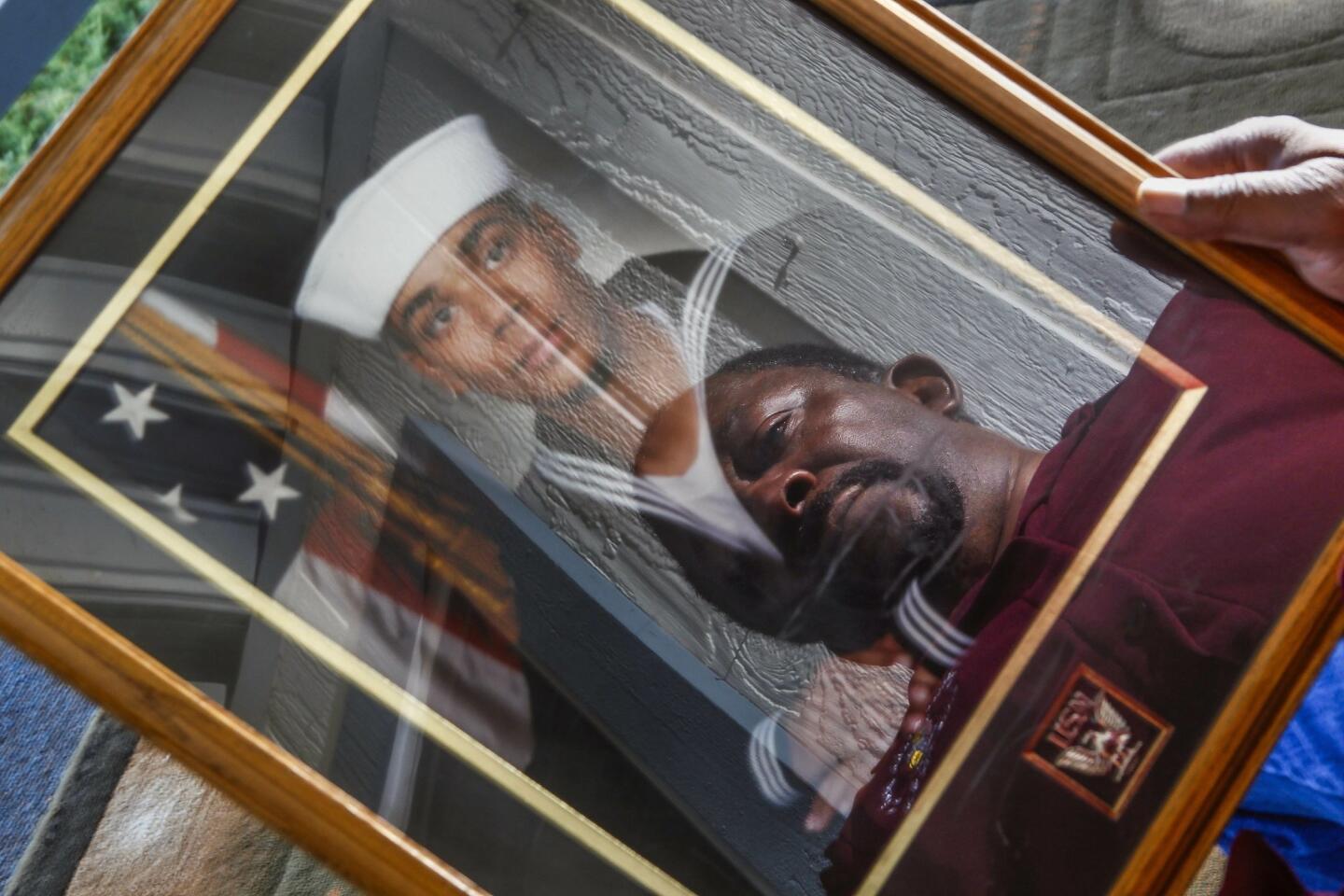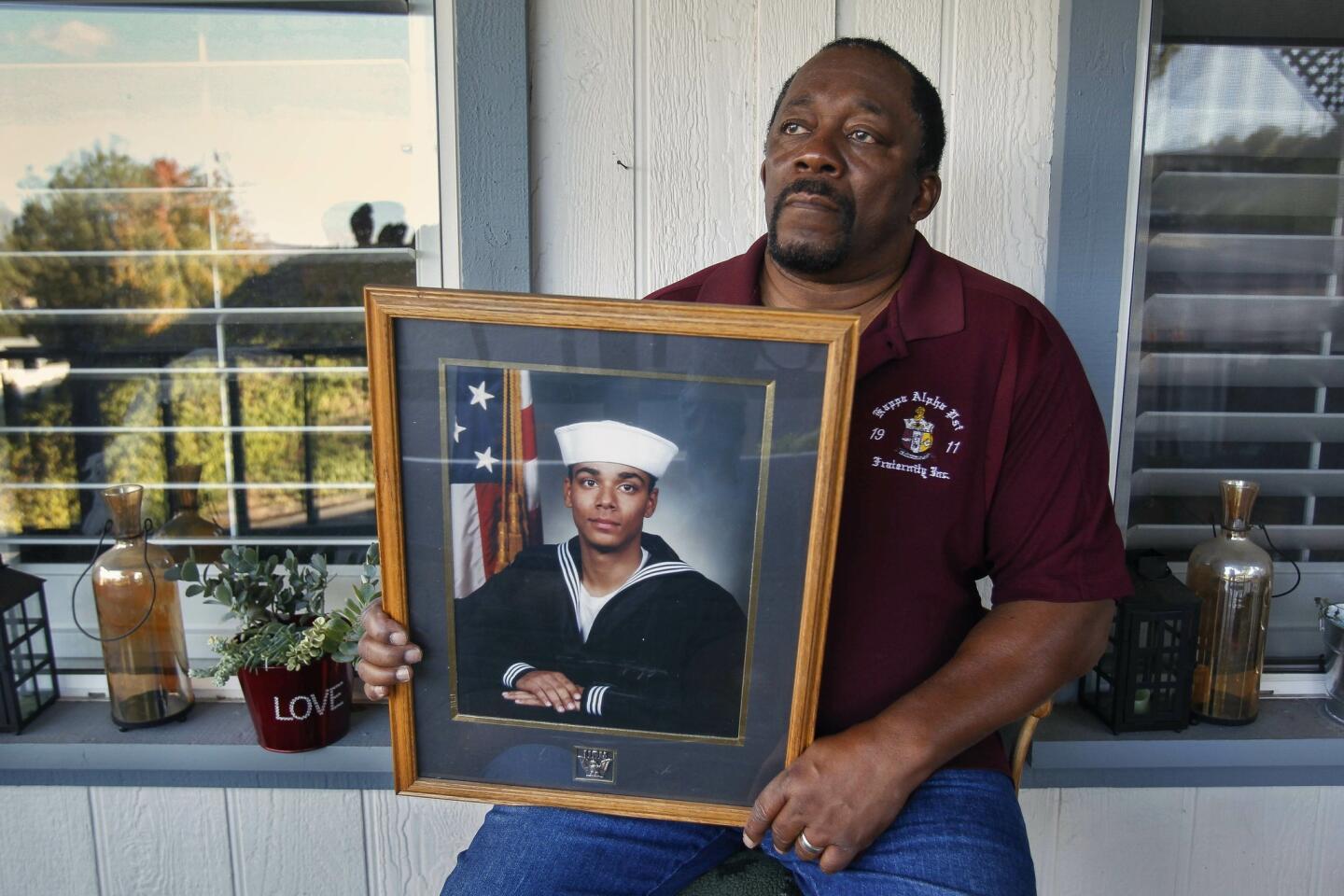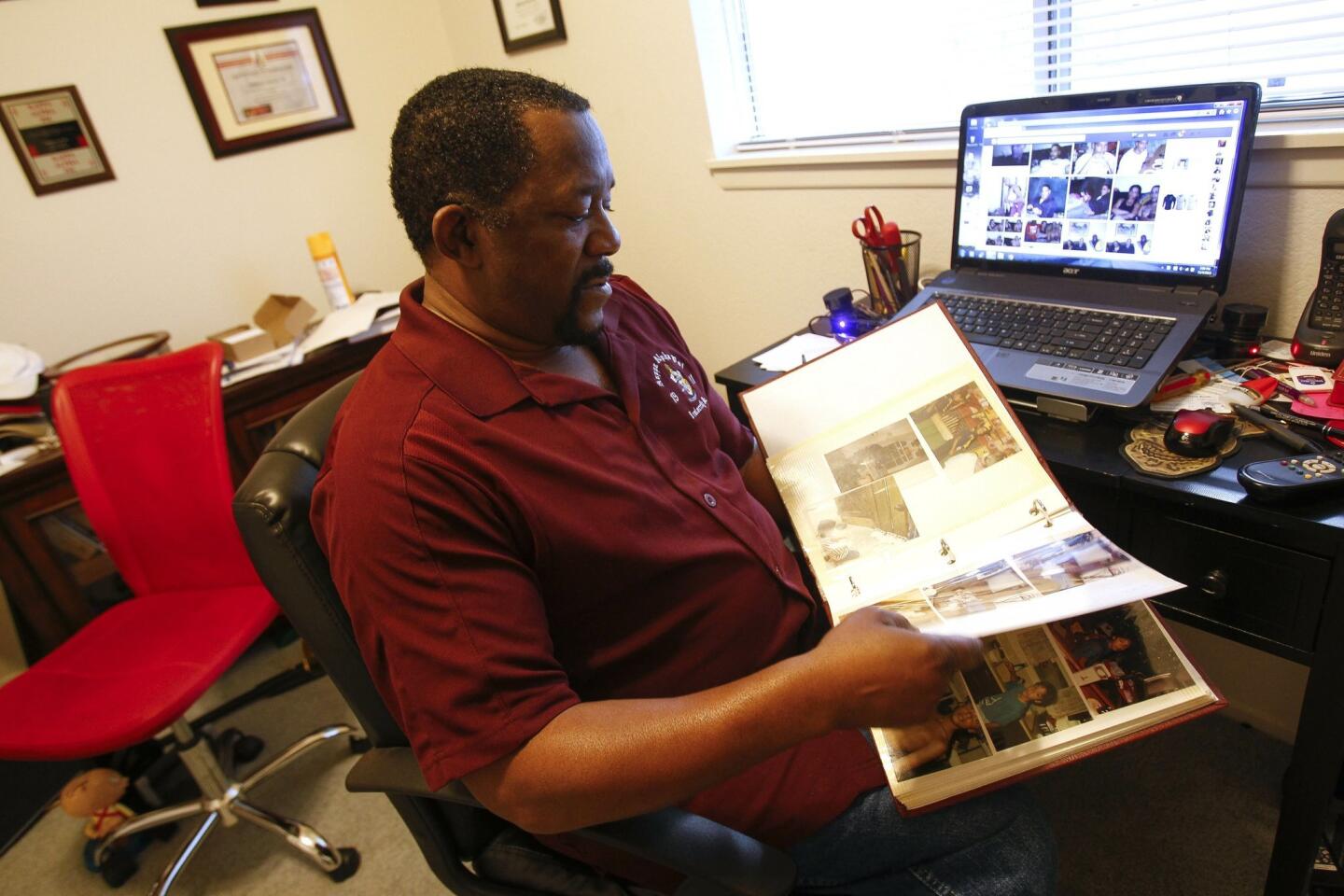Veteran suicides: What might have saved them?

What could have saved these veterans? At least 27 vets under age 45 died by suicide in San Diego County over 18 months. The San Diego Union-Tribune tracked down the families, friends and medical examiner records of these young veterans.
For them, there was no retirement, no second career, no time spent watching their children grow.
The majority suffered from depression or post-traumatic stress disorder after serving in a combat zone since the Sept. 11, 2001, attacks. Their experience defies academic research, which says troops who deploy are not more likely to die by suicide.
San Diego provides a rare window on post-9/11 veterans and the issue of suicide, perhaps one not available anywhere else in the nation.
With nearly 28,000 post-9/11 veterans, the county is the nationâs largest hub of Iraq and Afghanistan war-era veterans.
This special project relies on death information from the San Diego County Medical Examinerâs Office, one of the few â if not the only one in the United States â to regularly track veteran and military status in its data. Having the names of these men and women led to family members and friends who shared gripping, tragic and complex stories of the veteransâ lives.
The interviews revealed dissatisfaction with care provided by the U.S. Department of Veterans Affairs, both in San Diego and other regions.
These loved ones said the VA, and other health institutions, donât do enough to include spouses and parents when there are signs a troubled veteran is giving up on treatment or is in despair.
In the case of people at risk for suicide, they say federal privacy laws may do more damage than good. And the former director of the VA San Diego medical system agrees the issue should be examined.
Also, families of some of these veterans witnessed a revolving door of health care providers, in part because VA medical centers are teaching hospitals.
Some question the amount of medication prescribed in these cases. Nearly all commonly used antidepressants list suicidal thoughts as a possible â though rare â side effect, particularly for people under 25.
Additionally, thereâs a lethal combination of excessive drinking and easy access to guns.
Fourteen of these veterans shot themselves and eight of those were drinking at the time of their death â some quite heavily drunk, such as more than three times the legal limit for driving.
These stories of San Diego County veterans in despair follow investigations that have confirmed all is not right with the VA nationally.
In recent years, some veterans waited up to two years for disability benefits. In 2014, news broke that officials at some VA hospitals were falsifying wait times for medical care to boost their performance bonuses.
Closer to home, a recent VA inspector general report determined that San Diego VA doctors botched care of a 35-year-old former Camp Pendleton Marine who shot himself in October 2014.
Family members said they are speaking out to help other veterans facing the same set of challenges.
âI used to think that people who died by suicide were crazy. ... I have learned thatâs not the case. My husband wasnât crazy,â said Erin Murzyn, widow of a 44-year-old retired Marine from Alpine who killed himself less than two years after leaving uniform.
âHe was in pain that he didnât feel would ever stop. He made a decision in that moment that was a very bad decision.â
Outrage, guilt, regret
Thereâs no shortage of news about the suicide rate among American military veterans â estimated at 22 per day among vets of all ages.
Spurred by public outrage over young troops surviving combat only to die by their own hand back home, Congress last year attacked the problem with new legislation and funding for the VA. The Pentagon has also stepped up prevention programs after a spike in suicides among active-duty troops in the mid 2000s.
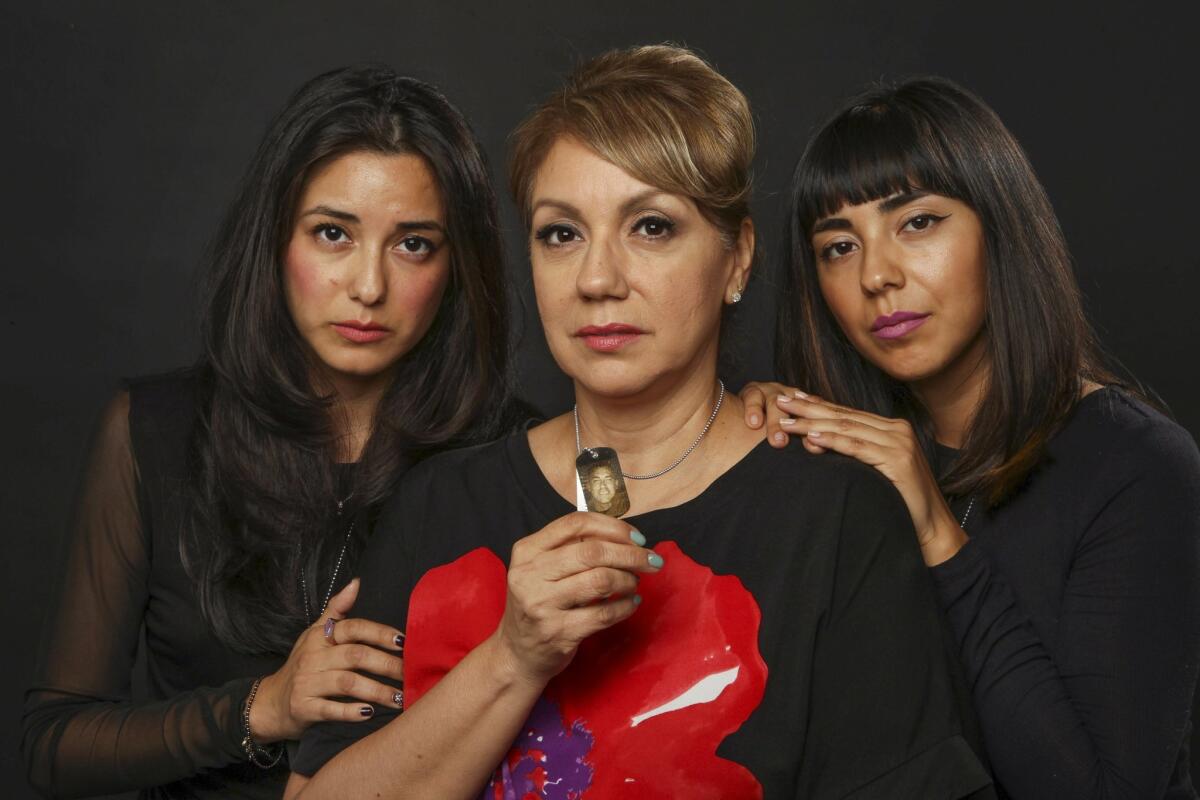
Loved ones inevitably have regrets, and even guilt, after a suicide.
But several of these families shared the same wish: That they had gotten more involved, instead of expecting the veteran to be able to navigate the system, or trusting the system to work.
âBecause he had so many doctors and social workers and counselors who were constantly working with him, I thought they were really on it. And Iâm sure they were, itâs just that I think we needed to be more proactive on the medications, as a parent, speaking out,â said Diana Cruz, whose 32-year-old son, Mike, was an Air Force veteran.
âI wish I would have been there every time with him at the VA â every visit, with everybody he met.â
Deaths spur changes
The case that sparked this special project by The San Diego Union-Tribune was the October 2014 suicide of 35-year-old Marine veteran Jeremy Sears.
A report issued last month by the VA inspector general said that VA doctors failed him by continuing to refill prescriptions for hydrocodone â generic for the narcotic painkiller Vicodin â for 22 months without requiring Sears to come in for a face-to-face meeting.
Studies show that chronic pain elevates risk of suicide, as does traumatic brain injury â which Sears was diagnosed with by a VA neurologist who conducted a disability exam.
The investigation found no evidence that Sears was offered follow-on care for the brain injury diagnosis.
The VA inspector general called for policy change at the national and local levels.
Some of the other 26 San Diego County cases in this report may be under investigation right now, according to a congressional staffer familiar with the process.
Another San Diego suicide that already has spurred change is that of 37-year-old Air Force veteran Rudy Hewitt.
Hewitt died at the La Jolla VA hospital within days of being released from the facilityâs locked-down psychiatric hold. He was transferred to a voluntary drug rehab program at the same hospital, where he hanged himself in his room.
A VA official said thereâs some indication Hewitt downplayed his symptoms when talking to drug rehab workers. It was not clearly documented that psychiatric unit employees reviewed his case with the rehab staff when he was transferred.
The VAâs âaction planâ as a result of his November 2014 death was to formalize the San Diego hospitalâs policy for handoffs between inpatient units so staff members document that they reviewed each case together.
Whatâs the takeaway from these veteransâ too-short lives?
Paul Rieckhoff, executive director of Iraq and Afghanistan Veterans of America, compared todayâs situation regarding veteran suicide to the early days of the AIDS crisis.
âI feel like we are losing our friends left and right and no one is paying attention,â Rieckhoff said.
âPeople thought AIDS was a gay problem. People think vets dying by suicide is a government problem,â he said. âUntil we address it as a public health challenge, weâre going to be nibbling around the edges.â
Rieckhoff said these stories are troubling because San Diego is known nationally as a region with deep resources for veterans.
âIf itâs this bad in San Diego, imagine what itâs like in other places,â he said.
After hearing these stories, some critics of the VA said it should be torn down and replaced because the nationâs second-largest federal bureaucracy is hopelessly unwieldy.
As far as reputation goes, the recent controversy over VA wait times for medical care and a national backlog of disability claims very likely turned off two of these San Diego County veterans to the point that they didnât seek care for their PTSD at all.
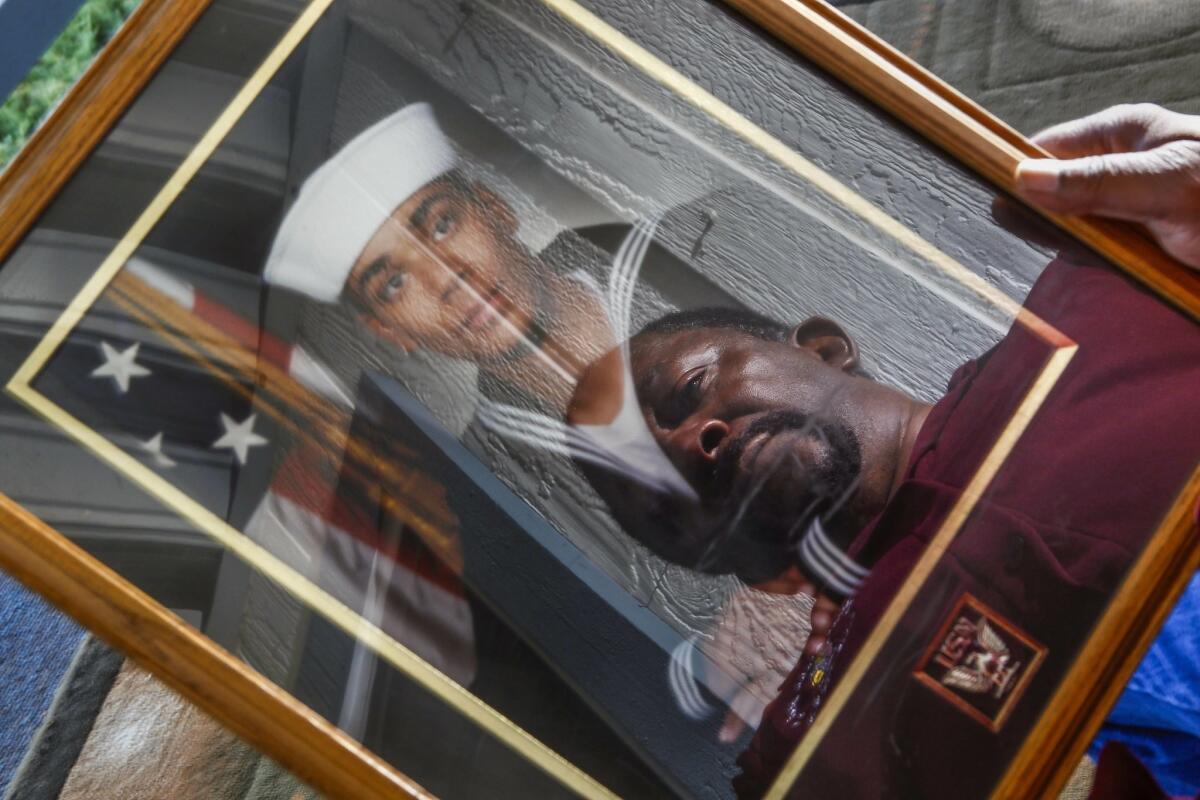
âThe system needs to be rebuilt from the ground up. It doesnât work. Itâs antiquated,â said Floyd âShadâ Meshad, a Vietnam veteran and president of the National Veterans Foundation in Los Angeles.
âIt needs to be the Microsoft or the Apple Corp., where everything is first class, state of the art, research is ongoing to improve the delivery system,â Meshad said. âNo one wants to do that. Itâs too convenient to leave it as it is.â
Accountability debate
However, some independent advocates for veterans say that if the VA disappeared, many more lives might be lost.
âJust trying to track my medical care in the private sector would be a full-time job -- versus walking into one building,â said Geoff Millard, a post-9/11 Army veteran and policy analyst at the nonprofit advocacy group Swords to Plowshares in San Francisco. His military injuries add up to a 100 percent disabled rating in the VA.
âThe VA is a great system of care that has issues that need to be repaired. But we donât need to scrap the system,â Millard said.
The question of accountability remains open.
In the Jeremy Sears case, itâs unclear if the Oceanside VA doctor received any discipline for continuing to prescribe addictive painkillers to the vet. The VA wouldnât say, citing employee privacy.
At the San Diego VA, Jeff Gering kept a running tally on a white board in his office. It was the number of veteran suicides in the region.
Gering was director of the VA healthcare system for more than three years, until leaving at Christmas for a position at a San Diego nonprofit health service. The Union-Tribune interviewed him before he departed the VA. His replacement hasnât yet been named.
Gering said the staff does an âissues briefâ every time a patient dies by suicide.
âEvery suicide is a tragedy, so we canât say we did everything we could. We do an aggregate look at the root causes of suicides annually. And, some of them -- one, the cases that occurred here in the building -- we actually look at everything involved in that case. Could we have done something different?â Gering said.
âI donât think thereâs a magic bullet. But we have to keep trying to see how we can strengthen our systems to minimize and reduce the number of suicides.â
During his tenure, Gering said he tried to tighten up the suicide screening process.
âWere they screened? If yes, did they screen positive? When screened positive, were they mild, moderate or severe? If moderate or mild, why werenât they severe? What did we miss? Every time something goes wrong, we try to learn from that,â he said.
The San Diego VA has faced a dramatic increase in its mental health caseload -- growth of more than two and a half times between 2002 and 2015. Meanwhile, mental health staffing has lagged somewhat behind and is now hobbled by a national shortage of psychiatrists.
The 2014 VA medical care scandal, when whistleblowers revealed that some VA facilities nationally were faking statistics to hide long wait times, has prompted intense scrutiny of the federal agency.
Michael Blecker, a Vietnam veteran who leads Swords to Plowshares, is one of 15 people on the federal Commission on Care charged with reporting back to Congress in June with an evaluation of access to VA health care.
âThereâs some serious discussion about, if thereâs a problem at a VA medical center, how do you hold that director accountable,â Blecker said.
âThey are trying to change the leadership culture. They are trying to find out where the lines of accountability are,â Blecker said.
âThere are no answers yet.â
Deployment impact?
This is not a scientific study of veteran suicide, and what we found in these peopleâs stories contradicts broad studies that say veterans who deployed are no more likely to try suicide.
One explanation is, perhaps, that San Diego County is home to a concentration of combat veterans from Camp Pendleton and the other Marine Corps and Navy bases located here.
Rieckhoff, of Iraq and Afghanistan Veterans of America, is skeptical of the research on deployment and suicide. He said his groupâs anecdotal experience is similar to what the Union-Tribune found.
âYou canât tell me that deploying nine times does not make you more likely to die by suicide. We see it every day,â the former Army officer said.
The lead author of a large 2015 study of 1.3 million post-9/11 veterans said his findings of no correlation between suicide risk and deployment were puzzling.
âWe were also surprised for not finding significantly higher suicide risk among Iraq and Afghanistan war veterans compared to non-deployed veterans,â said Han Kang of the Institute for Clinical Research in Washington, D.C.
On the other hand, Rieckhoff said, âThe way we look at it is, once you are in the military, you are subject to the stress. And thatâs a driving force. The threat of deploying for 10 years is pretty stressful to you -- and your family, as well.â
Some families of these 27 veterans didnât want to be interviewed because the topic was too painful. Others opened their homes.
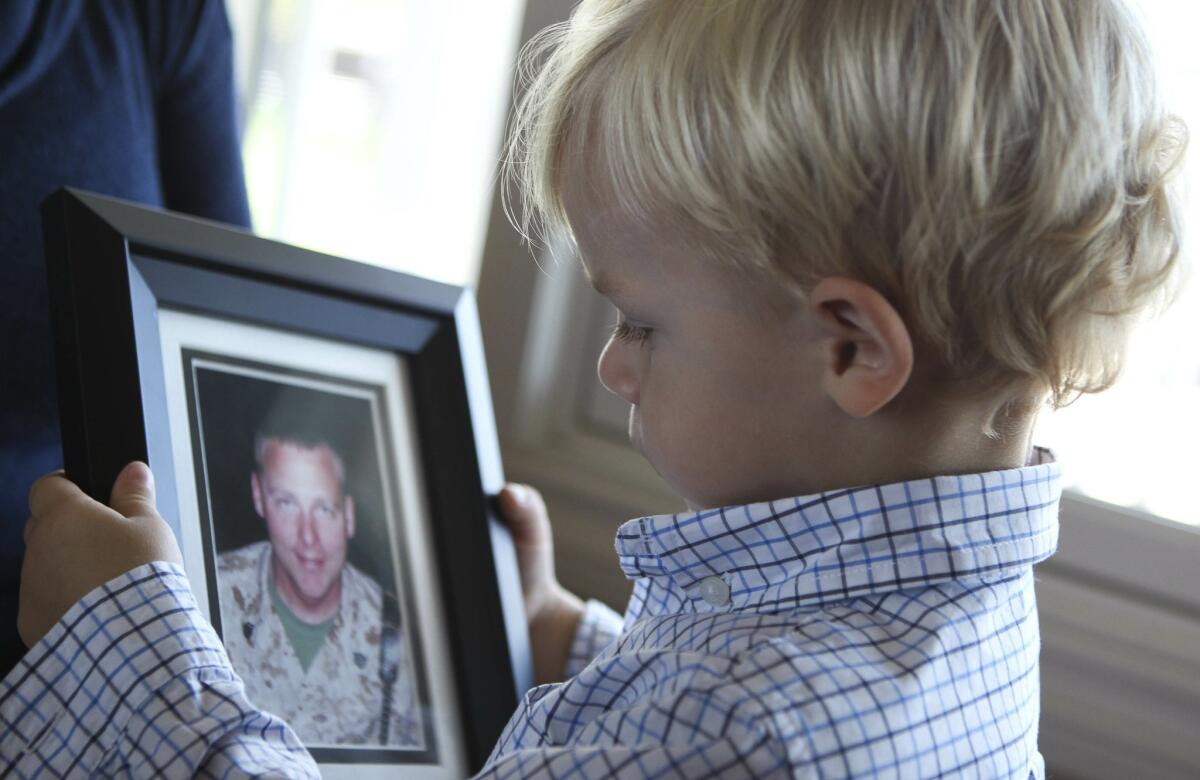
One of those people is Erin Murzyn of Alpine.
Her husband, Russell, was virtually a recruiting poster for a Marine of the post-Sept. 11 era.
Adopted by a Minnesota family, Murzyn enlisted in the Marine Corps and served 20 years.
Married later in life, the coupleâs wedding photo shows Russell Murzyn as a smiling, handsome blonde in Marine Corps dress blues.
After pulling back-to-back tours in Iraq in 2006 and 2007, Murzyn came home and married Erin, a San Diego banker. Neither had children.
When Russell retired from the Marines in 2013, little Nathan was on the way. Russellâs roadmap for the next two decades appeared clear: He would help raise his child, build a second career and enjoy life. He had earned it.
But that didnât turn out to be Russellâs story. He wrestled with PTSD and his new civilian identity. He was allowed to hopscotch between VA counseling programs and deceived his wife about how it was going.
Less than two years after Murzyn retired, he shot himself, surrounded by pill bottles, a bottle of scotch, a photo of Nathan and a gun his wife didnât know about.
âI want people to know they are more than just the way they died. My husband, he was more than just the way he died,â Erin Murzyn said.
âThey served our country just as honorably as anyone else. ... They werenât crazy. They just really couldnât adjust or they werenât getting the right care for PTSD. It happens.â
The âinvisibleâ wound
The research is fairly strong on the big picture: Studies show a link between post-traumatic stress disorder and suicide risk -- in the general population, and among military veterans.
When veterans are treated for PTSD, the risk is more murky. Studies contradict each other and are limited in scope.
Do combat veterans have a stronger link to suicide? The research doesnât give a clear answer.
Among the 27 veterans profiled in this project, 15 were either diagnosed with PTSD or depression, or their loved ones suspected they had it.
All 15 had deployed to either Iraq or Afghanistan.
Some were in treatment, but it wasnât working for them.
Russell Murzyn was one of those.
The San Diego VA never acknowledged he had PTSD until after his death. His diagnosis was major depressive disorder.
After a post-retirement emotional meltdown, Murzyn eventually sought treatment at the San Diego VA.
The VAâs long wait times play into his story here.
He sought treatment in the PTSD clinic but was wait-listed for individual treatment and didnât want group sessions after a bad experience. Two months later he got an appointment, but he was already involved in a research study about complicated grief and depression, so he stuck with it.
Should Russell Murzyn have been allowed to shop around for counseling, instead of getting focused care for PTSD?
At VA hospitals, the gold standard for treating PTSD is a 12-week course of sessions. The two established methods are prolonged exposure therapy and cognitive processing therapy.
The success rate is 60 percent to 80 percent.
Erin Murzyn said her husband was flailing around, trying to find something to address his pain.
âHeâs in the VA at some appointment, and feels like whatever he is doing is not working because he feels the same. And he sees some stupid flyer,â for a research study, his widow said. The grief he was addressing was his fatherâs death some years before. âI think they let them go into them willy-nilly.â
Jeff Gering, the former San Diego VA health care system director, agrees with her somewhat.
âItâs OK for veterans to choose studies. Whatâs not OK is to say the research study meets his clinical needs,â Gering said. âThereâs a gap there. Thatâs a red flag.â
Now, Murzyn could have seen a private therapist, with the VA paying. Thatâs due to the Veterans Choice Act, which became law in August 2014 in response to the VA wait-time revelations.
Another Marine Corps veteran who didnât get what she needed was Pamela Dowling.
The 28-year-old former Camp Pendleton Marine was diagnosed with PTSD after her first deployment. She started therapy in the military and then at the San Diego VA.
She got one of the gold-standard treatments, cognitive processing therapy. It called for writing assignments and daily worksheets.
Her aunt, Lindsay Stevens, said Dowling eventually dropped the therapy because it was too much in addition to working and college.
âShe vented to me about the assignments the therapist gave to her because she didnât have time for that kind of âextra homework,â especially given the nature of what she had to share in them,â said her aunt, who is close in age.
She switched to once-a-month âsupportiveâ therapy sessions after that, then stopped going entirely.
âAs the therapy was not helping, she began to attend the sessions less and finally told me she stopped going at the end of 2014,â Stevens said.
Dowling shot herself in May 2015, days after her aunt called the national VA crisis line on her behalf.
In a series of heartbreaking decisions, Stevens said she and the crisis line worker chose not to send authorities to Dowlingâs apartment after the Marine veteran admitted to her aunt that she was suicidal.
Stevens made arrangements to fly to San Diego to collect Dowling and move her back to Oregon, where she has family. Dowling agreed that she could wait over the weekend for her aunt to arrive. Instead, Dowling killed herself the next morning.
âAfter 10 years of PTSD therapy, she shouldnât have shot herself. Thatâs not usually how that would work,â Stevens said. âTen years of therapy, you should be getting better.â
Privacy vs. family
Several families said they wish theyâd known their son or husband stopped seeing the doctor or therapist.
But since the Health Insurance Portability and Accountability Act of 1996, the VA works under strict guidelines for releasing medical information.
A veteran has to specifically give permission for a provider to discuss the case with family, according to a San Diego VA spokeswoman â a possibly high hurdle if the veteran is ashamed or stubborn about opening up.
Has privacy protection gone too far if a doctor canât call a wife or a parent if warning signs appear?
Some families interviewed for this project think so.
The San Diego VAâs former director said maybe.
âI think doing a second look at the HIPAA law to see if, in these cases, when really you are talking about life or death, is there a way the health care organization can share with the family for the good of the patient,â Gering said in a recent interview.
âWe canât do it now, but laws can be changed, and maybe thatâs where we need to go with this,â he said.
Psychiatrist Dr. Deborah Peel has been an activist on HIPAA since 2004, when she formed the group Patient Privacy Rights.
Peel argues that privacy between a patient and doctor is a bedrock principle for good care. âItâs hard to trust a stranger with personal information about your mind or body without the assurance that that person is protecting you,â she said.
However, she said HIPAA doesnât prevent a therapist or doctor from acting if thereâs suspicion the person is in danger.
âIf you know somebody has dropped out of treatment, was not well, is not responding, you have an ethical duty to reach out to the family and get other measures in place,â Peel said.
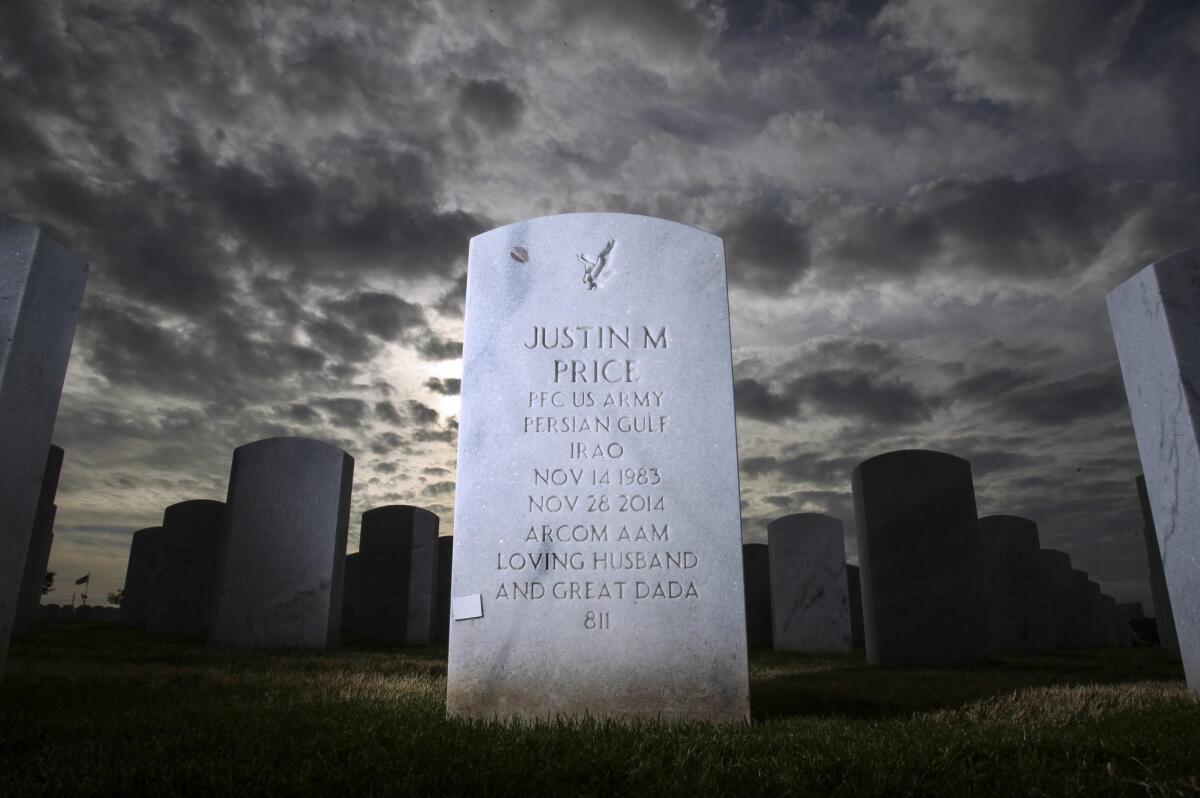
The American Medical Association advises that a doctorâs judgment should hinge on whether a family member asking for information âhas a role in taking care of the patient and whether the physician believes, in his or her professional judgment, release of the patientâs information is in the patientâs interest and relates to the personâs involvement in the patientâs care.â
However, in that scenario, it requires a loved one to know enough to reach out -- and subtlety and judgment come into play.
Russell Murzynâs doctors say they thought he was doing fine. Murzyn saw his study psychiatrist six times in the three months leading up to his death, though he chose to stop therapy through the grief study.
In a statement provided to the Union-Tribune, Dr. Sidney Zisook, a VA psychiatrist involved with UC San Diegoâs psychiatry training program, makes the case that Murzyn did not get fragmented or limited care.
âThis is the case of a veteran who was showing significant improvement in his symptoms during his participation in this study, whose grief was lifting to the point that he became engaged in life once again, who was doing so well that he returned to work for the first time in a long time and was thriving in his new job,â Zisook wrote.
âThis is the case of a veteran whose suicide shook the foundation of every clinician who had the honor of working with him.â
A lethal combination
A veteran is much more likely to use a gun in suicide than a civilian, research shows.
Mark Kaplan, professor of social welfare at the University of California Los Angelesâ Luskin School of Public Affairs, said he sees a âperfect stormâ when guns and alcohol are both present.
âI think some of those acts are impulsive. I think they are faced with a precipitating crisis, they drink excessively and may not have a history of chronic alcohol problems, and they simply drink to be able to pull that trigger,â said Kaplan, whose research focuses on suicide risk.
The San Diego County cases support that theory. Roughly half of the post-Sept.11 veterans who used guns were also at least legally drunk at their death.
For example, 40-year-old retired Marine Jonathan Turner had nearly twice the legal limit of alcohol in his blood when he shot himself while home alone in his Oceanside apartment. After a night of drinking with a buddy, he had become upset over the death of a friend.
âI think we need to do a better job of probing for acute use of alcohol among people who are perceived to be suicidal,â Kaplan said. âThe presence of guns, the presence of alcohol represent, in my mind, a perfect storm.â
The VA offers free gun trigger locks to veterans, often as a follow-up for those who call the national crisis hotline.
Another idea is to convince them to separate their ammunition from their weapons, or to agree to store weapons away from home.
The point is to slow someone down if they want to pull the trigger.
Millard of Swords to Plowshares said the idea of removing guns entirely is a taboo subject in the veterans community.
âNo one wants to take it on,â he said. However, the Army infantry veteran added that heâs not a gun owner â and not because he is anti-gun.
âI donât own a gun because I know the statistics behind veteran suicide, and I have PTSD. I know I wouldnât be having this phone conversation.â
Too many pills?
Some families interviewed for this project didnât like what they saw concerning the number and types of medications prescribed to their loved ones.
To Diana Cruz, her 32-year-old Air Force veteran son Mike, who was struggling with PTSD and alcohol, seemed to turn into a âzombieâ on his medicine.
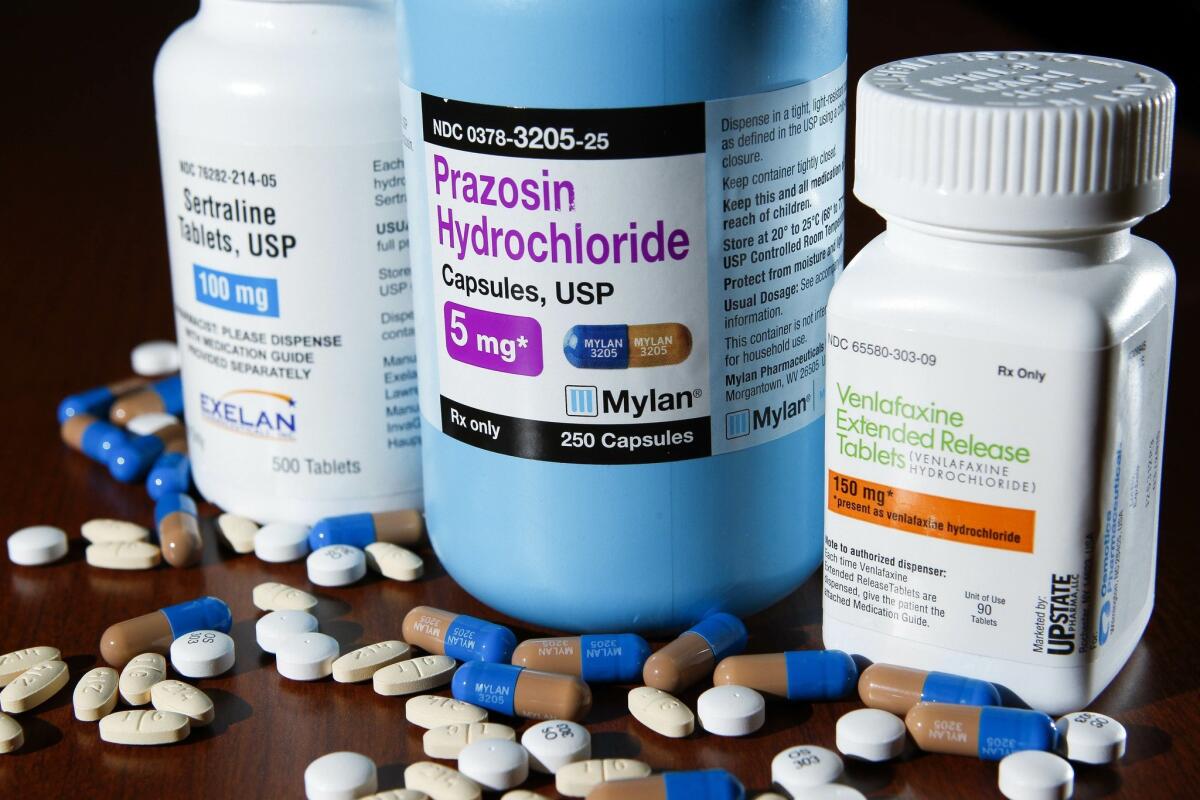
âThey just really medicated him over there. That was the thing, he just wasnât really himself. It was awful. I just thought, âDo I want to see my son the other way or this way?â Because this way heâs like a vegetable,â said Diana Cruz, who lives in Indio and drove to San Diego with her daughters to be interviewed for this story.
After Mike Cruzâs death, she found a list of 10 of his prescriptions â for nausea, to help sleep, to make him avoid alcohol, for example.
âEvery one has suicide side effects on them,â his mother said.
This is not a new complaint, and itâs one veterans advocates have made for some time. The general consensus is that perhaps doctors have a heavy hand when prescribing drugs for PTSD and depression.
A December 2014 report from the U.S. Government Accountability Office, an independent federal watchdog, said 94 percent of veterans with depression were prescribed at least one antidepressant by the VA.
But, in examining a sample of patient records, the GAO found that almost none were treated in accordance with the VAâs clinical guidelines, including a standard assessment within a month to six weeks after beginning the medication.
Congress has addressed the issue through hearings.
After being given summaries of the San Diego County suicides detailed in this project, U.S. Rep. Jeff Miller, chairman of the House Veterans Affairs Committee, said they âhighlight the enduring problemsâ with VA mental health care.
âThere is still much more work to be done in order to stop the epidemic of veteran suicides in this country. To that end, the committee is continuing its focus on VA overmedication issues, and Congress is currently considering legislation to address these problems,â Miller said in a written statement to the Union-Tribune.
However, other advocates in the battle against suicide describe a âclimate of fearâ about antidepressants that is harmful.
In 2004, the Food and Drug Administration directed a âblack boxâ warning on most antidepressants regarding the possibility of an increased suicide risk among young people up to age 24.
A decade later, in 2014, the American Foundation for Suicide Prevention issued a statement saying the impact was deadly: A substantial drop in the use of antidepressants followed, and instead of declining, suicide attempts increased among people aged 10 to 29.
Sonya Norman of the VAâs National Center for PTSD said sometimes patients canât settle into therapy without the help of antidepressants to smooth out their peaks and valleys.
âThey work,â said Norman, a psychologist who heads the PTSD Centerâs consultation program.
âMaybe someone feels less vigilant, they sleep a little better, they concentrate a little better, their moods improve, they feel a broader range of emotions. Maybe they donât feel as much a desire to avoid, maybe they are not having the intrusive memories as often.â
Call to action
The group Iraq and Afghanistan Veterans of America has called for a national registry for post-Sept. 11 vets because leaders donât think they are being tracked properly, in terms of suicide, homelessness and the jail population.
âWe know people are dying, but we canât quantify it. Too many of them are not recorded ... There is no veterans suicide database. So we donât know,â Rieckhoff, the executive director, said.
âAnyone who tells you definitively the veterans suicide rate is lying.â
More stories
- PTSD Meds 101
- A Day with VA Suicide Prevention Team
- Suicides: Tough But Necessary Reporting
- Many Resources For Vets, Families in Crisis
More to Read
Sign up for Essential California
The most important California stories and recommendations in your inbox every morning.
You may occasionally receive promotional content from the Los Angeles Times.
